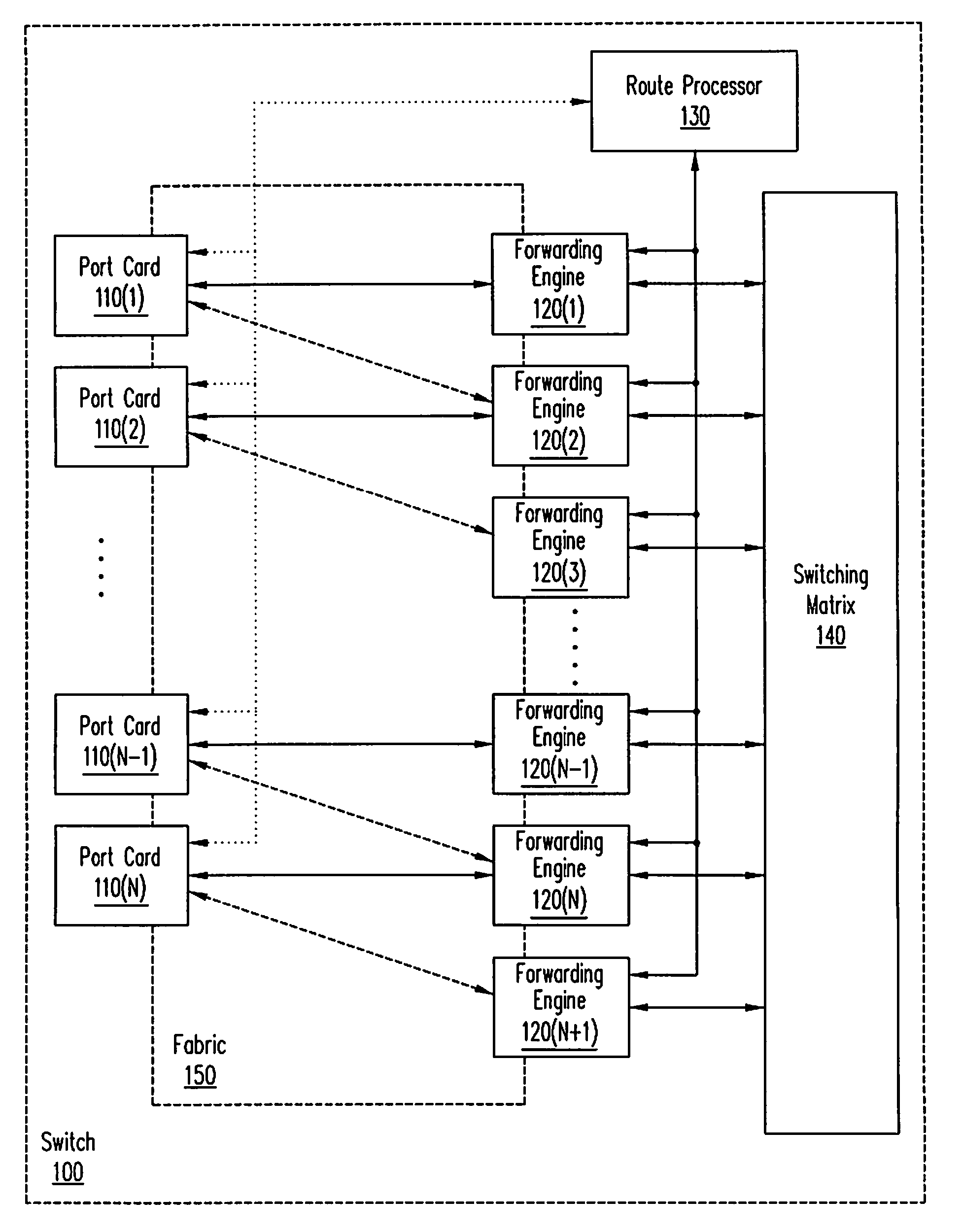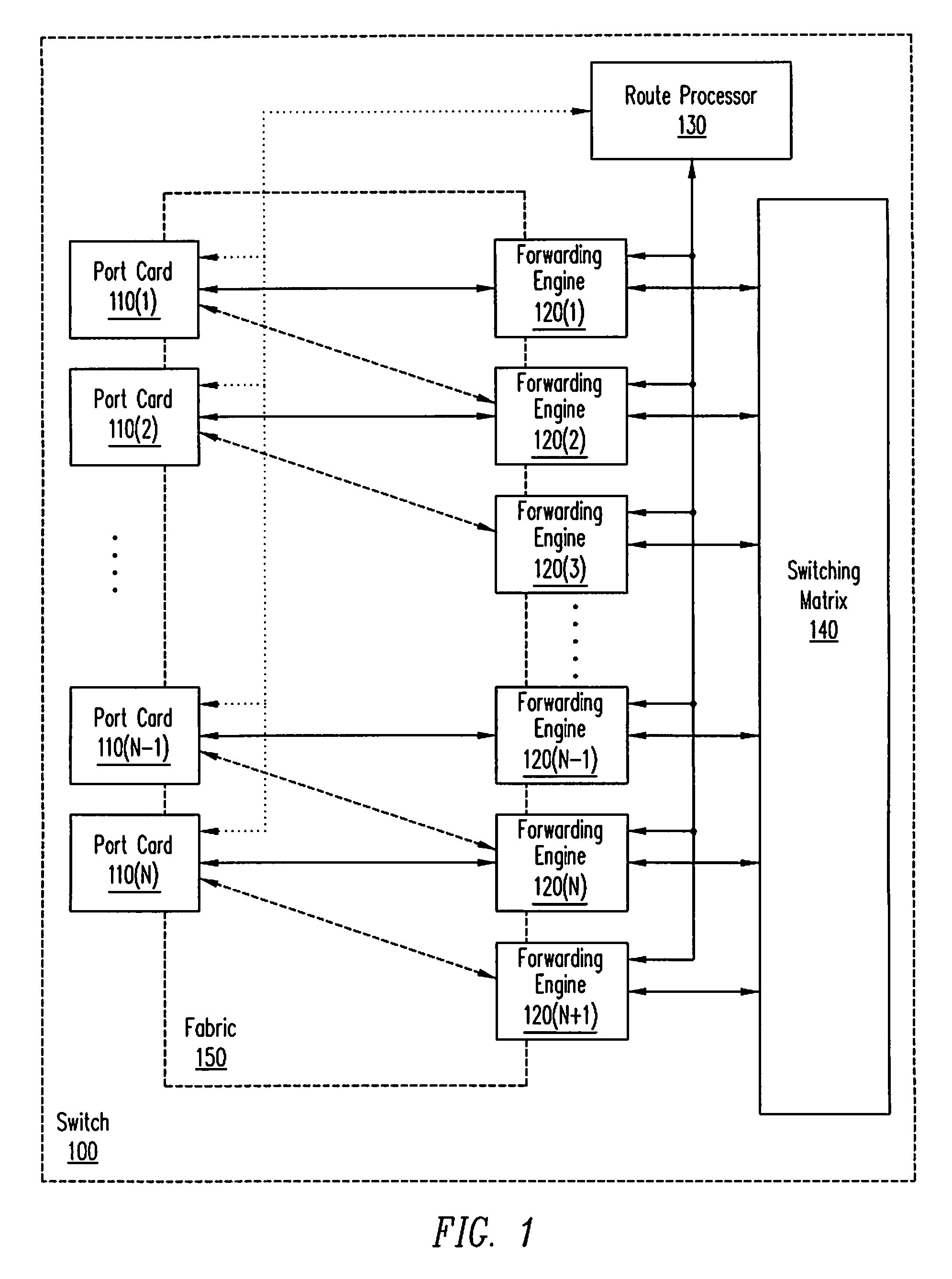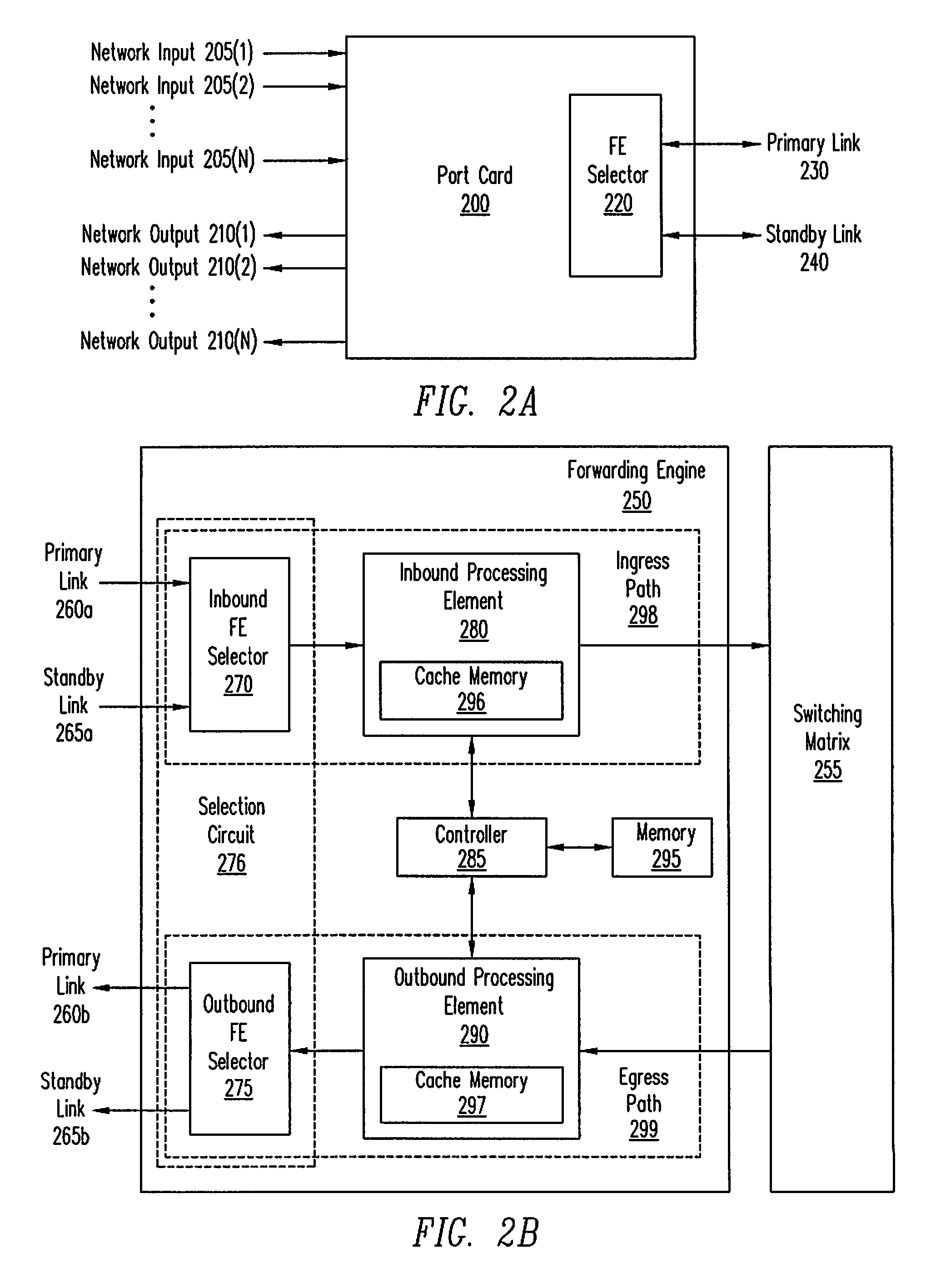Method and system for optimized switchover of redundant forwarding engines
- Summary
- Abstract
- Description
- Claims
- Application Information
AI Technical Summary
Benefits of technology
Problems solved by technology
Method used
Image
Examples
Embodiment Construction
[0028] The following is intended to provide a detailed description of an example of the invention and should not be taken to be limiting of the invention itself. Rather, any number of variations may fall within the scope of the invention which is defined in the claims following the description.
Introduction
[0029] The present invention provides for the reliable conveyance of data streams in an commercially reasonable fashion. This reliability is achieved in a network element that employs separate port cards and forwarding engines by providing redundant forwarding engines (FEs) and supporting quick and efficient switchover between these FEs. Such a network element typically employs N+L FEs (e.g., N+1; where N is the number of port cards and L is the number of redundant (or standby) FEs) and a distributed switching fabric between the port cards and FEs (also referred to as a distributed fabric, or more simply, a fabric; where there are N port cards and M (=N+L) FEs).
[0030] More part...
PUM
 Login to View More
Login to View More Abstract
Description
Claims
Application Information
 Login to View More
Login to View More - R&D Engineer
- R&D Manager
- IP Professional
- Industry Leading Data Capabilities
- Powerful AI technology
- Patent DNA Extraction
Browse by: Latest US Patents, China's latest patents, Technical Efficacy Thesaurus, Application Domain, Technology Topic, Popular Technical Reports.
© 2024 PatSnap. All rights reserved.Legal|Privacy policy|Modern Slavery Act Transparency Statement|Sitemap|About US| Contact US: help@patsnap.com










